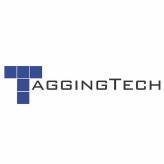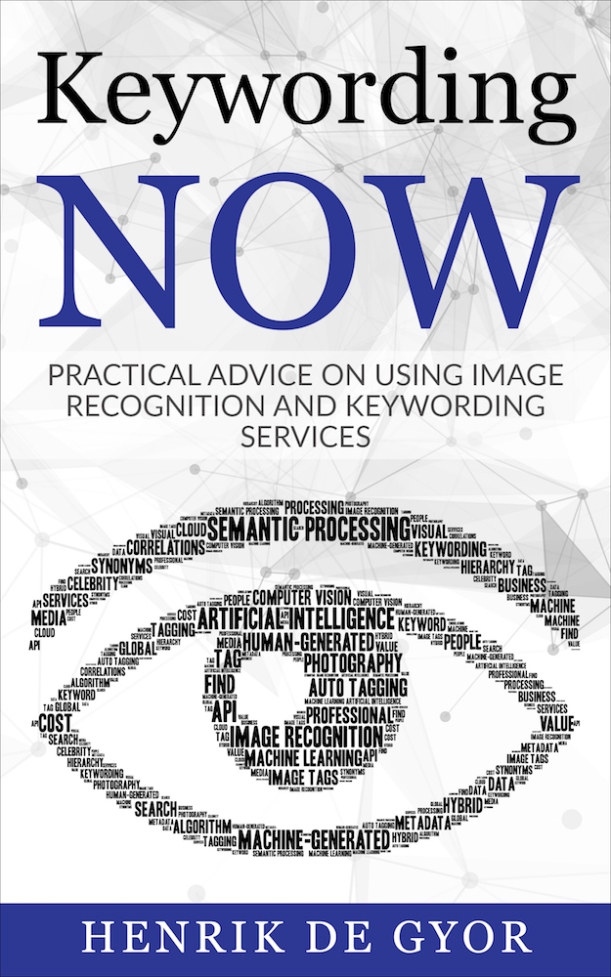Tagging.tech presents an audio interview with Mark Sears on crowdsourcing
Listen and subscribe to Tagging.tech on Apple Podcasts, AudioBoom, CastBox, Google Play, RadioPublic or TuneIn.
Keywording Now: Practical Advice on using Image Recognition and Keywording Services
Now available
Transcript:
Henrik de Gyor: This is Tagging.tech. I’m Henrik de Gyor. Today, I’m speaking with Mark Sears. Mark, how are you?
Mark Sears: I’m doing great, Henrik, Thank you.
Henrik: Mark, who are you and what do you do?
Mark: My name is Mark Sears. I’m Founder and CEO of Cloud Factory. We spend a lot of time leveraging an on-demand workforce to structure data. We take a lot of unstructured data per clients and we process that in the cloud using a combination of human and machine intelligence. We do that for a lot of, mostly tech companies. We work a lot with technology companies that are looking for an API driven workforce to do tons of different use cases very relevant often to tagging tech would be things like tagging images for the purpose of machine learning. Or tagging images in terms of core business processes for things like intelligence. We do transcription and translation. We do a lot of document processing, again, trends like processing receipts and invoices. We do web research going out to do human powered screen scraping for lead generation, serum enrichment.
A lot of different, very tedious, routine, repetitive work. We do it in a bit of a different model. Again, what we refer to as cloud labor. The ability for organizations to send their work to the clouds and have it come back done accurately, quickly, cost-effectively in hours if not minutes. So that’s kind of the world that we claim.
Henrik: Mark, what are the biggest challenges and successes you’ve seen with crowdsourcing?
Mark: When we think of crowdsourcing, we often like to look at it compared to maybe more traditional outsourcing model. We actually consider ourselves to be somewhere in between. So, my view of the world is that traditionally having a large number of people working in a delivery center … Offshoring, outsourcing. You need to get work done. This is one option that obviously a lot of companies have used in the last 20 years. Is to send that work to a team, maybe thousands of people that are sitting in urban India, Philippines or China. That’s one way to get a lot of this type of paperwork done.
Another way, that’s more popular, recently, is to send it to a crowd and to do crowdsourcing. Our kind of view of the world is that crowdsourcing and sending out work to anonymous crowds, someone who maybe just signs up online and there’s not a really high level of engagement, accountability or ability to get quality from out of an anonymous, faceless crowd. We see that on one side of the spectrum. We see the other side of the spectrum being a traditional outsourcing. The view of the world that we have is right in between. It’s the idea of having an on-demand workforce that is leveraging automation and is highly efficient because of technology. But, at the same time, is not an anonymous crowd. We actually know and train, professionally managed and curated crowd. I think that’s a roundabout way of talking about how we view the world that I’ve seen and learned through a lot of different projects … The biggest challenge is often quality.
It’s really harnessing the tower of an anonymous crowd is something that’s quite hard to do. So we love kind of playing in the hybrid and finding that radical middle where you get the best of all worlds in terms of quality, scalability, elastically, cost-effectiveness, speed of turn around, etc. to accomplish your large data work projects.
Henrik: Mark, as of April, 2016, how do you see crown sourcing changing?
Mark: Moving forward, there’s no question that the rise of robots and the flattening of the world are two major trends that are affecting, not just crowdsourcing, but really the future of work and really how enterprises get their work done. As we think of both of those trends, the world becoming more and more flat because of mostly the internet as well as just the cost of devices to access the internet. We’ve had 1.1 billion people have come online in the last five years’ And there’s another billion expected in the next five years.
So you have this massive, global workforce that are now able to contribute to the tagging, and again, the routine repetitive work that every organization has deep inside that needs to get done. This new, untapped potential in being able to do online work and to leverage the talent that is equally distributed around the world. Again, acknowledging that opportunity is not. And so, we can really flatten the world with the internet with crowdsourcing and other online work approaches.
The other side of it again, is automation and the rise of robots. Any project or solution that is not thinking first how do we automate this … Is going to be left behind. We absolutely have to leverage technology. Automation takes on a different forms. Actually, automating the work itself, using AI, ML, etc, to automate pieces of our tagging, labeling, video, audio, transcribing processing type of workloads is definitely essential to do that. But a lot of the technology just is not there. Looking first to see what pieces can you actually automate.
And then also, of course, there’s the delivery and the receipt of the work. Being able to have the API to be able to send the work in and have it sent back once the work is completed, that automation. Having the automation of the workflow is well to streamline and speed things up and make things more cost-effective.
There’s automating the actual work and there’s the automating of processes of getting the work done and delivering and receiving that one. Really, I see that’s a huge trend that everyone is how do we make this more streamlined, more efficient, faster, more cost effective, less manual touches in these projects to really, really make things more effective. That does include, as well, trying to automate as much of the work that we can do -That’s one thing that we have really seen just the desire and requirement to find the right mix of human and machine intelligence for every project. For every solution. It really is different for every solution.
Trying to automate as much as we can with the approach, but obviously, there’s a lot of nuances in doing, kind of split, AB testing to kind of understand really what is the best, total cost of ownership of the solution depending on how much automation you include. Those are two trends definitely play into the future of getting this type of work done.
Henrik: Mark, what else would you like to share with people looking into crowdsourcing?
Mark: I think the key thing is understanding self serve versus full serve. There’s no question there’s power in leveraging a global workforce and accessing online and being able to send your repetitive data projects to a crowd. The question is that there is experience in doing that. A lot of people do like to have a self serve approach and accessing it themselves. Other people prefer to have experts that are there to help along the way in terms of making sure that you’re getting the quality out of the crowd that you’re expecting.
I think that as we look at the landscape, one way, I think somebody should be thinking about their project is, am I ready to do this on my own or is it better to maybe work with a little more enterprise-grade approach? We often encourage people to think about that span. If you’ve got a smaller project that you need done really quick, quality is not the highest priority. It’s going to be more that you just need it done quick and cheap. I think self-serve options to send that work out and get it back it really where you want to be going.
If you have a larger project or an ongoing project, one that requires really getting good, accurate work done, maybe there’s an opportunity to find a portion of that to be automated. All of those things, I think, you want to be looking for a little bit more of an enterprise-grade. Maybe a full service, professional service type approach. I think is a key thing that we would recommend that people think through as they begin to look at crowdsourcing as a way to get their project done.
Henrik: Mark, where can we find more information about crowdsourcing?
Mark: Crowdsourcing as a term has definitely been broad and changed. I think the usual source of Googling crowdsourcing is going to lead you in a lot of different directions from crowdfunding to Wikipedia to a lot of different directions. There definitely are some sources that are out there, but there’s not that many players that are really in this space. I think it’s great to take a look at everyone’s approach in terms of how, exactly the tools that they provide access to … Where you’d access the crowd. The services that they provide. How they manage, recruit and train and vet their workforce, their crowd. I think probably the best way is really to get out there and explore some of the different options that are available from different partners.
Specifically, in terms of finding some other places online to learn crowdsourcing.org is one good resource. Specifically, they have a cloud labor tab that has some good information. You can follow along and see how people are leveraging these distributed, virtual labor pools to fulfill a large variety of tasks. That’s one great place. Obviously, our particular take on the world at cloudfactory.com is another option … Thoughts and resources and some articles and such again that help people think through how to really leverage the technology platform with a global workforce to accomplish their large data projects.
Henrik: Well, thanks Mark.
Mark: Thank you.
Henrik: For more on this, visit Tagging.tech. Thanks again.
For a book about this, visit keywordingnow.com

